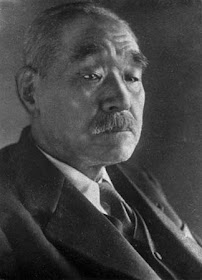I believe the long argument about just what would have been the human cost of an invasion of Japan in 1945 can be settled by knowing that the United States has not had to order a single new Purple Heart decoration to be manufactured for a dead or wounded American soldier, sailor or airman since 1945. The tolls from Korea, Vietnam, Iraq and Afghanistan have not emptied the stockpiles intended for presentation to causalities suffered during an 1945-46 invasion of Japan.
General Douglas MacArthur, eager for glory after having been chosen to lead the invasion of Japan, tried to convince President Truman that it would cost "only" 500,000 causalities. But Truman had his own estimate, produced by former President Herbert Hoover. Hoover, using his old skills as an economist, and backed up by an independent study group, estimated the real cost would be closer to a million American dead and wounded. The U.S. Navy, doing their own independent estimate came up with the same numbers. With the examples of the death toll from Okinawa and Iwo Jima as supporting evidence, Truman became a believer in Hoover’s numbers. And, in my opinion, that deceptive reduction in causality estimates justified Dugout Dug’s immediate recall. Only his political clout with Republicans in Washington saved his command until after another bloodbath finally empowered an American President to order his removal..
So the horrific casualties certain to result from an American invasion of Japan, plus the geo-political threat posed by the Soviet intervention, encouraged Truman to get out of this war as quickly as possible. And those were the same factors driving the Japanese decision to finally accept rational surrender on terms. It had taken four years of horrible bloodshed (and the loss of influence of some monumental egos, i.e. Tojo and MacArthur) for Japanese and American politicians to come to the realization that they had some rather basic goals in common.
First the Japanese - At the Big Six meeting on the evening of 9 August, the six participants each argued
their case. Foreign Secretary Togo(above) argued for accepting the Potsdam declaration, but retaining the Emperor.
General Anami (above) insisted better terms could be won by continuing to fight. No minds were swayed. But the three members of the "war party" were slowly led justify continuing the war primarily because it would preserve the Imperial throne. It was, to Japanese historians, Japan's Longest Day.
Finally, at 2 in the morning of 10 August, Prime Minster Suzuki (above) bowed before the Emperor and said it was up to him to decide.
And for the first time in modern Japanese history, the Emperor, dressed in his uniform (above) spoke directly to the politicians as the Emperor. "I
have ..concluded that continuing the war can only mean
destruction for the nation...the time has come to bear the unbearable....I
swallow my tears and give my sanction to the proposal to accept the
Allied proclamation..."
The Emperor then left the meeting, and Suzuki immediately presented a written pledge to follow the Emperor's wishes, and asked all six to sign it. The previous 24 hours had been building to this moment, to maneuver the generals and admirals to define as their honor not as their willingness to die for their Emperor, but to defend their signatures on this piece of paper. The three members of the war party were not stupid men. They knew what they were being asked to do, and doing it broke their hearts. But they signed.
The
next day Mr. Max Grassli, charge d’Affaires for Switzerland, sent a cable to James Byrnes, the U.S Secretary of State. It read, in part, "The
Japanese Government are ready to accept the terms enumerated in the
joint declaration which as issued at Potsdam…with the
understanding that the said declaration does not comprise any demand
which prejudices the prerogatives of His Majesty as a Sovereign
Ruler." It should have been the end of the bleeding. But it was not.










No comments:
Post a Comment
Please share your reaction.